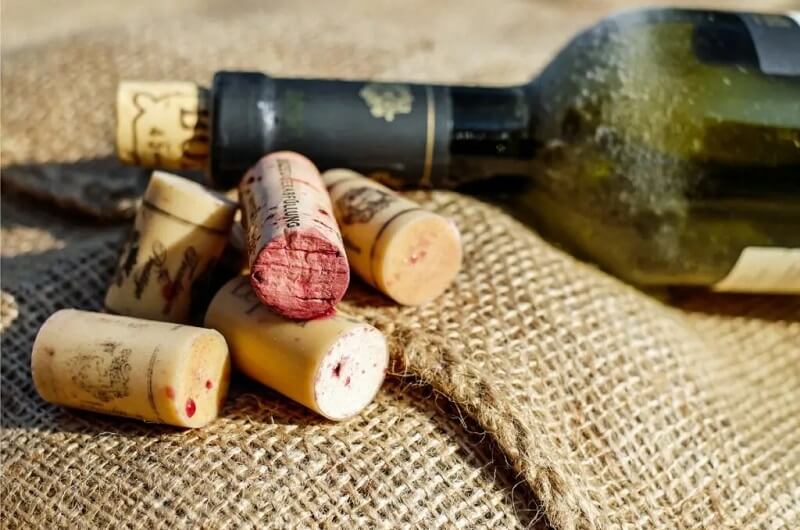Heat is often considered an enemy of wine. But just how does it impact our beloved bottles? Let’s dive in and explore the effects of heat on wine and how you can best preserve your precious vino.
The Science Behind Wine and Heat
Wine is a delicate concoction of water, alcohol, organic compounds, and other elements. While it may seem robust in flavor, its chemistry is rather sensitive.
The Basics of Wine Spoilage
- Wine’s Composition: Wine consists of various elements, such as tannins, acids, and alcohol. Each of these has its own vulnerability to temperature changes.
- Chemical Reactions: When exposed to high temperatures, the rate of chemical reactions in wine can increase. This can lead to spoilage and undesirable flavor profiles.
- Expansion and Contraction: Wine expands when heated and contracts when cooled. This can push the cork out or cause seepage if the bottle is exposed to fluctuating temperatures.
Effects of Heat on Wine Flavors
Excessive heat can fast-forward the aging process, but not in a graceful way. Instead of developing nuanced flavors over time, a wine subjected to heat can become “cooked,” leading to flat, dull, or off flavors.
- White Wines: Might lose their crispness and fresh fruit flavors, leading to a stewed fruit taste.
- Red Wines: Can become tannic and lose their vibrant fruit characteristics.
How Much Heat is Too Much?
While wine does need a certain amount of warmth during the fermentation process, post-production is a different story.
- Brief Exposure: Short bursts of temperatures around 77°F (25°C) might not ruin the wine immediately, but it’s not ideal.
- Extended Exposure: Temperatures above 77°F (25°C) for an extended period can start to negatively affect the wine’s taste and aroma.
The Myth of the “Hot Car”
We’ve all heard tales of wines being ruined after an afternoon in a hot car. But is this myth or reality?
Understanding the Car Effect
- Temperature Spike: On a hot day, the temperature inside a car can quickly soar above 100°F (37.8°C). This rapid temperature rise can seriously harm a bottle of wine in just a matter of hours.
- Direct Sunlight: Apart from the heat, direct sunlight can also adversely affect the wine by causing UV damage to the liquid inside.
So, the next time you’re thinking of leaving that newly purchased bottle in the back seat on a sunny day, you might want to think twice!
Storing Wine in the Summer Months
Summer can be a challenging time for wine enthusiasts, especially if you don’t have a dedicated wine cellar or cooler. But fear not, there are ways to keep your wine safe from the scorching heat.
Ideal Storage Conditions for Wine
- Temperature: Aim for a steady temperature between 55°F and 58°F (13°C – 14.5°C).
- Humidity: 50-70% humidity is perfect for keeping corks from drying out.
- Darkness: Wine should be kept out of direct sunlight and bright artificial lights.
- Stability: Avoid places with vibrations (like on top of a fridge) as it can disturb the wine’s sediment.
Summer Storage Tips
- Basements Are Best: If you have a basement, it’s typically the coolest place in the house and away from sunlight.
- Use a Wine Fridge: While a regular refrigerator is too cold and lacks humidity, wine fridges maintain the perfect conditions.
- Closets Over Cabinets: If you don’t have a basement or wine fridge, a dark closet is better than a kitchen cabinet which can get warm.
- Avoid Temperature Fluctuations: Even if your storage isn’t at the perfect temperature, consistency is key.
Recovery: Can You Save a Heated Wine?
So, let’s say it happened. You accidentally left a bottle in a warm spot. Is it toast? Or is there hope?
Signs of Heat Damage
- Seepage: Wine leaking around the cork.
- Bulging Cork: The cork might slightly protrude from the bottle.
- Cooked Aroma: The wine might smell like stewed fruits instead of fresh.
What To Do
- Cool It Down Gradually: If you suspect your wine got hot, move it to a cooler location, but avoid rapid temperature drops.
- Inspect Before Serving: Before uncorking, check for signs of seepage or a protruding cork.
- Taste Test: The ultimate test is in the tasting. If the wine tastes flat, dull, or overly sweet, it might have been heat-damaged.
Final Thoughts
Heat and wine are a challenging mix. But with a bit of care, knowledge, and attention to storage, you can enjoy your bottles at their best, regardless of the season. Remember, wine is meant to be a pleasure, so don’t stress too much. Just take the right precautions, enjoy the journey, and, most importantly, the sip!
